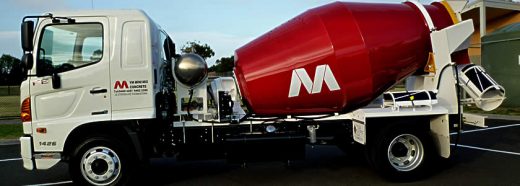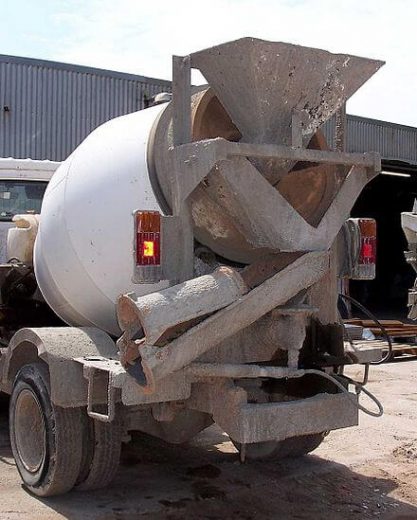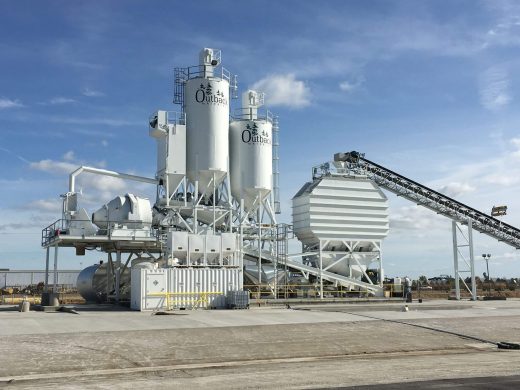Introduction
In the 21st century, everything has started to speed up, even in the construction industry too. The construction activities are speeding up by replacing the manual works with automatic machines. Likewise, in cement mixing, too, there has been rapid development. Instead of mixing on-site, a ready-to-use cement mix is being on the site so that no time is wasted in proportioning the cement to the desired strength.
Instead of on a job site, ready-mix concrete is made in a plant according to a predetermined mix design. Manufacturers mix sand, gravel, cement, and water depending on the project requirements before delivering the mixture to the site.
There are three types of ready-mix concrete: transit-mix concrete, central mixed concrete, and shrink-mix concrete.
The transit-mix concrete mixing procedure takes place inside the truck transporting the concrete. While in transportation, the concrete is partially mixed, and once it gets to its destination, it is totally mixed. This method of mixing concrete prevents it from hardening during transit.

Fig 1: Ready mix concrete transported to a site
Courtesy: Minimix.com.au
In 1909, a horse-drawn mixer was used to transport concrete, with paddles propelled by the cart’s wheels mixing concrete on the way to the job site. Stephen Stepanian of Columbus, Ohio, invented a self-displacing motorized transit mixer in 1916, which was the forerunner of the modern ready-mixed concrete truck. The poor quality of motor trucks in the 1920s hampered the development of improved ready-mixed trucks. The availability of heavier trucks and better engines in the 1940s allowed mixing drum capacities to increase, allowing ready-mixed concrete producers to meet the high demand for concrete caused by World War II.
Types
Some of the types of Ready Mix Concrete are –
Transit mix concrete- Because all of the necessary components are immediately charged in the truck mixer, transit composite concrete is also known as dry-batch concrete. During loading, the mixer drum is swiftly revolved at charging speed, and then it is rotated at typical mixing speed.

Fig 2: Transit Mixer
Courtesy: Wikipedia
In a truck mixer, there are three ways to mix concrete:
1. On-site concrete mixing is possible. With the drum moving at a slow, agitated pace, the materials are batched into the truck mixer and hauled to the job site. The concrete is entirely mixed by the mixing truck once it arrives at the job site. This approach has traditionally been utilized for longer delivery times, but it is gradually losing favor with the recent introduction of modern set control admixture systems.
2. In the yard, concrete can be mixed. This is the most popular method of combining concrete from a transit mix facility. Before traveling to the building site, the drum is turned at high speed for roughly 70 revolutions at 12-18 revolutions per minute. This process allows the batch team to verify and correct the slump and air of the batch before leaving the plant by completing the mixing in the yard. While driving to the job site, the concrete is steadily disturbed.
3. Concrete can be mixed while being transported. While traveling to the job, the drum is turned at a medium speed, then slowed to an agitation. This saves on gasoline, drum wear, and concrete overmixing. It does not, however, allow the operator to inspect the cargo before leaving the facility thoroughly.
Central Mixed Concrete – A stationary, plant-mounted mixer mixes the concrete before it is discharged onto a truck mixer in central-mixed concrete batch facilities. Wet-batch or pre-mix plants are other names for central-mix plants.
Non-agitating haul units, such as dump trucks, can also transport concrete from a central mix facility (typically over short distances). Central mixing has several advantages, including faster batching and less wear on the truck mixer drums. On the other hand, Central mix plants can be more expensive to buy and maintain than transit mix plants.

Fig 3: Concrete Central Mix Plant Installation
Courtesy: DHENoble
Shrink-mix Concrete – Shrink mix concrete is partially mixed in a central mixer before being loaded onto a truck mixer to finish the job. While charging the concrete, the truck mixer is spun at a rapid speed. The mixing might take place either in the factory or on the job site. The number of revolutions required to complete the blending of shrink mix concrete in the truck mixer varies depending on the size of the central mixer vessel and the time it takes to mix or co-mingle all of the ingredients (often less than 90 seconds). Still, about 30 turns of the mixer truck drum produce mix uniformity throughout the load. The concrete is then dumped into the truck mixer’s drum to finish the mixing process, resulting in shrink-mixed concrete. It takes two minutes of mixing in the truck drum at a sufficient mixing speed to mix shrink-mixed concrete thoroughly.
Properties
Some of the properties of Ready Mix Concrete are –
- Ready mix concrete can withstand any type of damage, including heavy winds, fires, and even explosions. Furthermore, it is impervious to termites and other small animals, obviating the need for additional treatments or sealants.
- It can endure high dampness levels and does not rot or deform like other construction materials.
- It can sustain high temperatures, making it impenetrable to the harshest weather.
- Ready mix concrete is exceptionally adaptable, and it can be shaped into almost any shape. It is ideal for any project, whether in building a pillar, sculpture, or even a driveway. Chemical admixtures are commonly used to vary the color, porosity, and cure time of concrete, giving them even more options for designing their projects.
- Ready mix concrete is significantly less expensive than other construction materials such as masonry. It’s simple to use and produces a consistent appearance on any surface.
- Concrete of higher quality is produced using consistent procedures and advanced equipment.
- >There’s no need to keep construction supplies on-site, and hence materials don’t get damaged due to weather conditions.
- The labor connected with concrete manufacture is eliminated, lowering labor costs. This will enable the owners to use extra money in other works.
- Pollution at the job site is minimized in terms of both air and noise, and thus clean air is maintained.
- There is no waste of fundamental supplies on the job site, which reduces unnecessary wastage.
- It reduces the amount of time to build anything.
- There will be no delays in finishing essential projects such as dams, highways, bridges, tunnels, and so on.
- Natural resources are conserved when raw materials are used this way efficiently.
- The workplace safety and project timetables are not disrupted.
- It is environment-friendly.
Conclusion
Ready-mixed concrete is also helpful for massive projects when space is restricted, and a mixing plant and aggregate stockpiles are not feasible. It has many applications like Foundation, Building, Highway, Bridge, Walkway, Retaining wall, Airport, Tunnels, Canals, Pile Foundation, Water tank, Shear wall, Kerb, Dams, Power Plant, etc. The concrete quality produced by the Ready Mixed Concrete plant provides greater hardening strength and building efficiency. RMC’s operation is highly automated and controlled totally by electronic means, reducing the risk of errors in numerous procedures. Apart from this, some points should be kept in mind, like the performance may be influenced by the transit time from concrete preparation on the distribution site. So, to sustain functionality according to the standard, more water or penetration is required. Also, before manufacturing, quality assurance (QA)/quality control (QC) must assess functionality on-site through fatigue testing. Because traffic during the transit of concrete may cause the concrete to be set, entrances must be added to prolong the setting period. Thus, it is recommended to use it as per the suitability of the work.
References
- Portland Cement Association, “Ready Mix Concrete”- https://www.cement.org/cement-concrete/products/ready-mixed-concrete
- Razorback Concrete Company, “Everything You Need to Know About Ready Mix Concrete”- https://razorbackconcrete.com/everything-need-know-ready-mix-concrete
- Constructionor, “Ready Mixed Concrete”- https://constructionor.com/ready-mixed-concrete/
- Civil Knowledges, “Ready Mixed Concrete (RMC) And Its Properties, Types, Advantages”- https://www.civilknowledges.com/ready-mixed-concrete-and-its-properties
- Concrete Alberta, “Transit Mix (“dry batched” or “truck mixed”) Concrete”- https://www.concretealberta.ca/transit-mix-vs-central-mix-vs-shrink-mixed-concrete
If you have a query, you can ask a question here.


